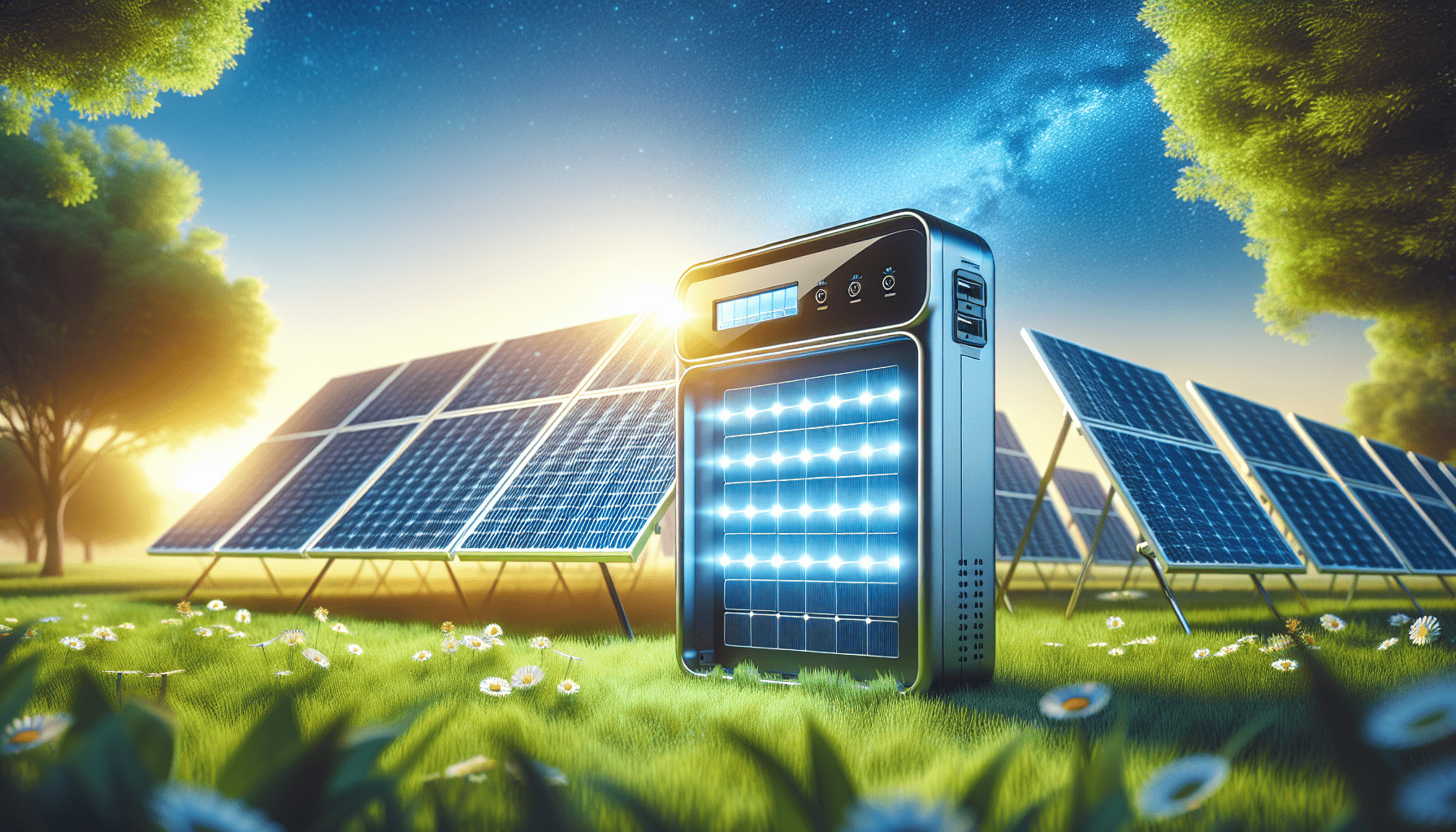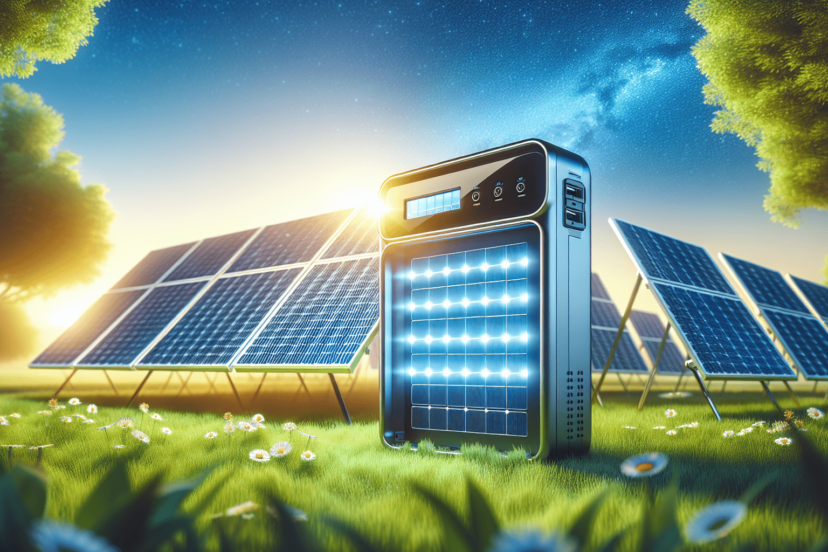The Ultimate Guide to Portable Power Stations with Solar Panels
As an Amazon Associate, I earn from qualifying purchases, at no additional cost to you. Disclaimer
Have you ever found yourself far away from a power outlet just when you needed it the most? It’s a common scenario when you are camping under the starlit sky, working remotely in a serene location, or even during an unexpected power outage. This is where portable power stations with solar panels come into play, providing a reliable and renewable energy source that can save the day. In this ultimate guide, I’ll take you through the ins and outs of portable power stations with solar panels, helping you understand everything you need to know to make an informed purchase.

Click Here to Go Solar and Save
Understanding Portable Power Stations
Portable power stations are compact, battery-based power sources that offer a convenient way to access electricity when you’re away from traditional power sources. Unlike generators, they provide electricity without noise or fumes, making them ideal for indoor and outdoor use.
What is a Portable Power Station?
A portable power station is essentially a large battery encased in a rugged shell equipped with various output ports. These outputs can include AC outlets, USB ports, and even carports, enabling you to recharge or power a wide array of devices and appliances.
Types of Portable Power Stations
Portable power stations vary primarily based on the battery technology they use, such as lithium-ion or lead-acid batteries.
Lithium-Ion Batteries: These are the most common and efficient type used in portable power stations. They are lighter, have a higher power density, and generally last longer.
Lead-Acid Batteries: These are heavier and less efficient but tend to be more affordable.
Power Capacity and Output
Power capacity is measured in watt-hours (Wh), and this determines how much energy the battery can store. If you’re planning to power multiple devices or more energy-consuming appliances, you’ll want a device with a larger capacity.
For output, the number and types of outlets can vary, so it’s essential to consider what types of devices you’ll need to power. Some may require an AC outlet while others just a simple USB port.
Integrating Solar Panels
The biggest advantage of solar panels is their ability to extend the lifespan of a portable power station by continuously providing power as long as there’s sunlight.
How Do Solar Panels Work with Portable Power Stations?
Solar panels work by converting sunlight into electricity, which can then be stored in the power station’s battery. Many portable power stations are designed to be solar-compatible, meaning they have built-in solar charge controllers.
Advantages of Solar-Compatible Power Stations
- Sustainable Energy: Solar power is a renewable resource, making it environmentally friendly.
- Cost-Efficient: After the initial setup cost, solar energy is free.
- Accessibility: Solar panels allow you to recharge the station anytime during daylight, which is particularly helpful in remote areas.
Choosing the Right Solar Panels
When it comes to solar panels, size and efficiency are crucial aspects to consider. Typically, portable solar panels are rated in watts, and higher wattage generally means more electricity generation.
- Portability: Look for foldable or compact panels that are easy to transport.
- Durability: Solar panels for outdoor use should be rugged and possibly weather-resistant.
- Efficiency: Monocrystalline panels are generally more efficient and compact than polycrystalline ones.
Click Here to Power Your Home with Solar
Factors to Consider When Choosing a Portable Power Station
Choosing the right portable power station requires considering several factors to ensure it meets your needs.
Power Needs
Firstly, assess your power needs by evaluating the devices you plan to power. Calculate their combined wattage to ensure the power station you choose can handle the load. Keep in mind that different devices have different power requirements, and it’s often safer to choose a power station with a larger capacity than you think you’ll need.
Portability
If you plan to move the power station frequently, then its weight and size are important considerations. Look for models designed with handles or wheels for easier transportation.
Charging Options
Consider the charging flexibility offered by the power station. In addition to solar charging, most are rechargeable via AC outlets or car adapters. More charging options mean more versatility in how and where you can recharge it.
Budget
Lastly, your budget will play a role in what you can afford. While high-capacity and solar-compatible power stations can be pricey, there are often more affordable models with lower capacities that might suit simpler needs.
Safety and Maintenance
Ensuring the safe and efficient operation of your portable power station involves understanding its maintenance and safety protocols.
Safety Tips
- Use Correct Charging Methods: Always use the specified outlets and adapters.
- Monitor Temperature: Avoid placing power stations in areas with extreme temperatures.
- Regular Inspection: Frequently check for wear and tear, especially around output ports.
Maintenance Tips
- Battery Care: Regularly charge the power station to prevent the battery from depleting completely.
- Solar Panel Cleaning: Keep the surface of your solar panels clean to maintain efficiency.

Click Here to Discover Solar-Powered Solutions
Real-Life Applications
Camping and Outdoor Adventures
Portable power stations are a game-changer for camping trips, allowing you to effortlessly charge gadgets, lights, and small appliances in the great outdoors.
Emergency Backup Power
In event of power outages, a portable power station can run essential devices like radios, phones, and medical equipment till the main power is restored.
Remote Work Sites
For those working in remote locations, especially in construction or field research, portable power stations offer a reliable energy source for tools and communication equipment.
Top Picks and Recommendations
Choosing the best portable power station with solar panel compatibility involves comparing various models based on their features, capacity, and price. While I’m not endorsing specific brands, here are some features to look for when selecting your device:
| Feature | Description |
|---|---|
| Capacity | Measured in watt-hours (Wh), ensuring it meets your power needs. |
| Durability | Rugged design with weather-resistant exteriors for outdoor use. |
| Port Options | Includes AC, USB, and possibly DC outputs for flexibility in powering different devices. |
| Solar Compatibility | Features built-in solar charge controller for ease of integration with solar panels. |
| User Interface | Intuitive displays showing battery level, input/output status, and more. |
Conclusion
Portable power stations with solar panels offer an excellent balance between convenience, sustainability, and versatility. As we’ve explored, understanding your power needs and the capabilities of these devices is essential for making a choice that best fits your lifestyle or specific uses. Whether for camping, emergencies, or remote working conditions, they provide a reliable source of power, bringing peace of mind and functionality wherever you venture. So, are you ready to ensure you never run out of power again?

